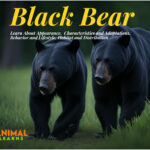Interesting Black Bears Facts: Types, and Diet
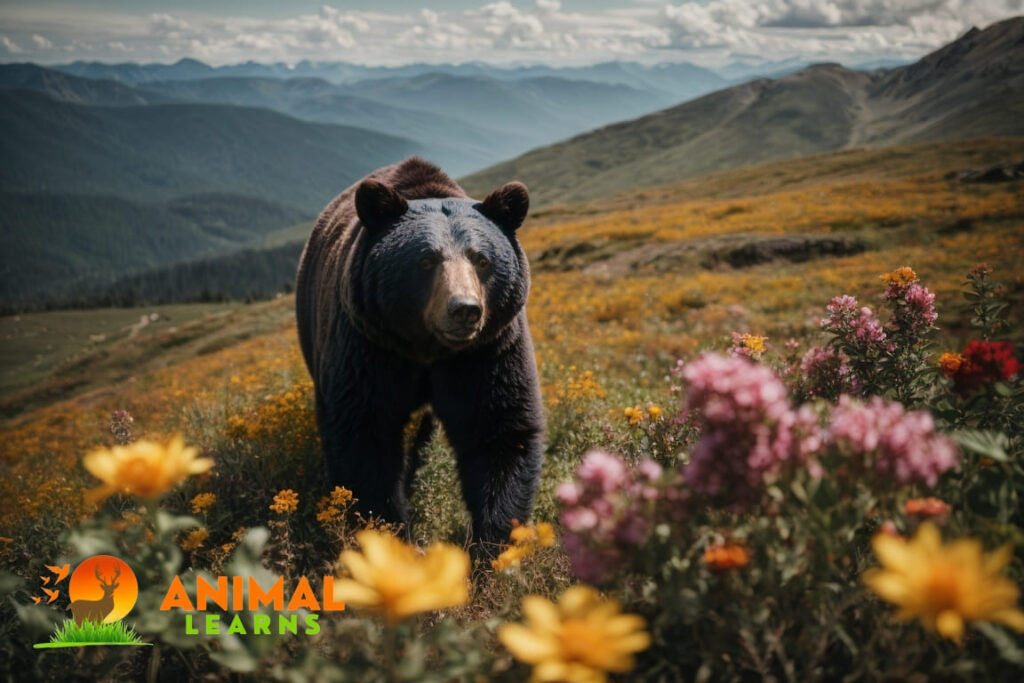
Discovering more about black bears facts reveals the fascinating world of these famous North American beasts. The American black bears is a medium-sized bear species that is native to North America. They are known for their shiny black fur, but they can also have brown, cinnamon, or even white fur.
Black bears are omnivores and their diet consists of both plants and animals. They are opportunistic feeders and will eat whatever is available in their habitat.
Black bears are excellent climbers and can climb trees to escape predators or to find food. They are also known for their hibernation habits, where they can sleep for up to 7 months without eating or drinking.
Black bears are generally not aggressive toward humans, but it’s important to keep a safe distance from them if you encounter one in the wild.
Black Bears Fact
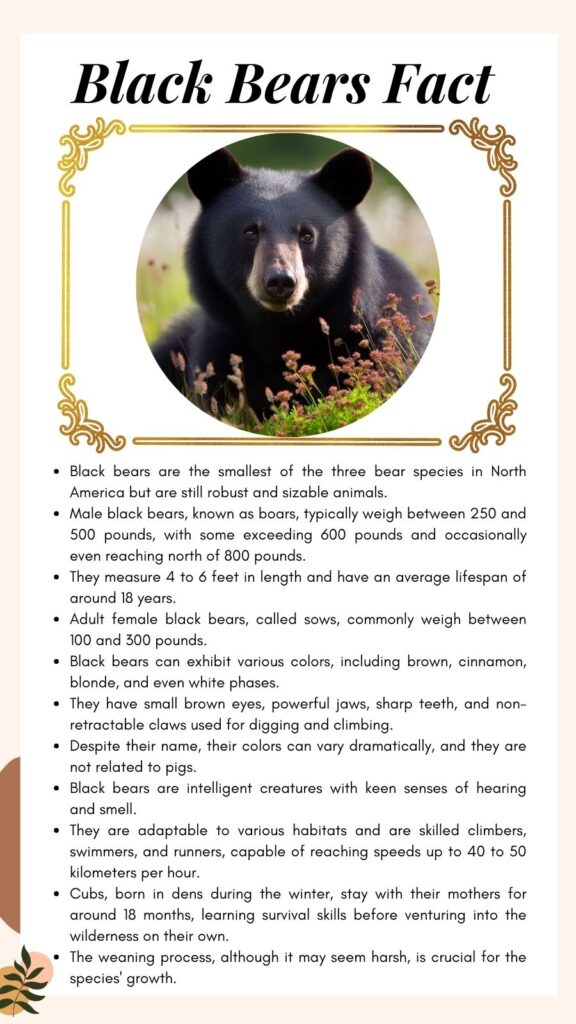
- Black bears are the smallest of the three bear species in North America but are still robust and sizable animals.
- Male black bears, known as boars, typically weigh between 250 and 500 pounds, with some exceeding 600 pounds and occasionally even reaching north of 800 pounds.
- They measure 4 to 6 feet in length and have an average lifespan of around 18 years.
- Adult female black bears, called sows, commonly weigh between 100 and 300 pounds.
- Black bears can exhibit various colors, including brown, cinnamon, blonde, and even white phases.
- They have small brown eyes, powerful jaws, sharp teeth, and non-retractable claws used for digging and climbing.
- Despite their name, their colors can vary dramatically, and they are not related to pigs.
- Black bears are intelligent creatures with keen senses of hearing and smell.
- They are adaptable to various habitats and are skilled climbers, swimmers, and runners, capable of reaching speeds up to 40 to 50 kilometers per hour.
- Cubs, born in dens during the winter, stay with their mothers for around 18 months, learning survival skills before venturing into the wilderness on their own.
- The weaning process, although it may seem harsh, is crucial for the species’ growth.
Types
Exploring black bears fact reveals the fascinating world of these iconic North American mammals. Black bears are a fascinating and diverse species that are widely distributed across North America.
While they belong to the same species, there are several distinct black bear types or subspecies that exhibit variations in size, coloration, and behavior.
These differences are often influenced by their geographic location and the specific environmental conditions they inhabit.
Here are some notable black bears types:
American Black Bear (Ursus americanus):

- The American black bear is the most widely distributed bear species in North America.
- They vary in size and coloration, with coat colors ranging from black to brown, cinnamon, and even a rare white variant known as the Kermode bear or “spirit bear” in British Columbia.
- American black bears, in terms of black bears fact, have a diverse diet, consuming vegetation, fruits, insects, and occasionally small mammals and fish.
- They inhabit a wide range of ecosystems, from dense forests to swamps, and even urban areas.
Asian Black Bear (Ursus thibetanus):
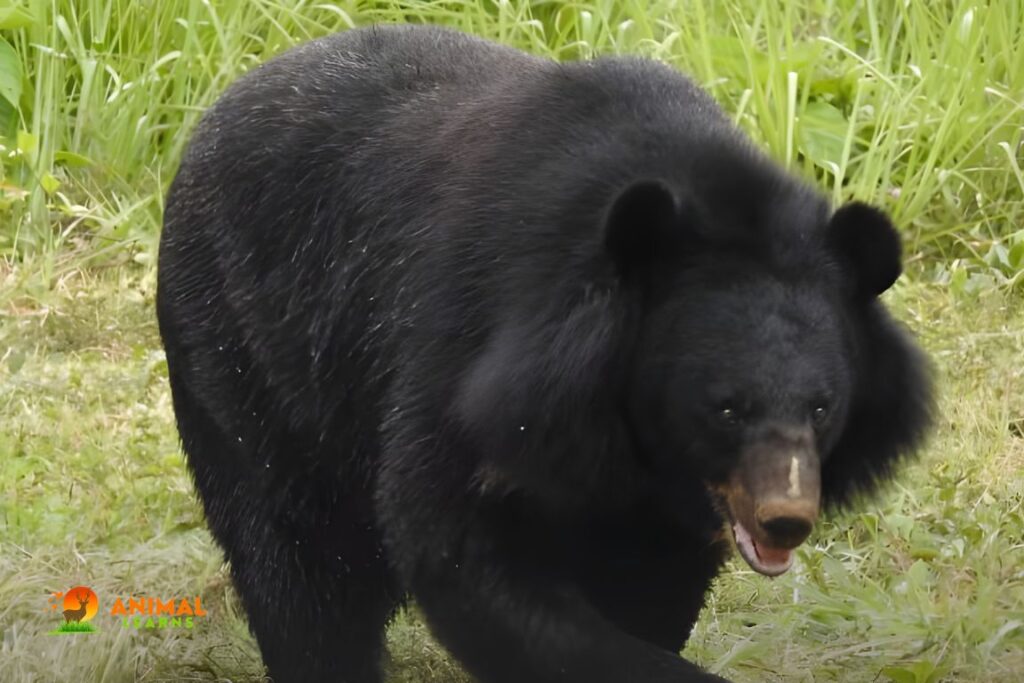
- The Asian black bear, also known as the moon bear due to the crescent-shaped white mark on its chest, is found in various parts of Asia.
- They are generally smaller than American black bears and have shaggier fur.
- Asian black bears primarily inhabit forested areas and mountainous terrain.
- Their diet consists of fruits, vegetation, insects, and small mammals.
Kodiak Bear (Ursus americanus middendorffi):
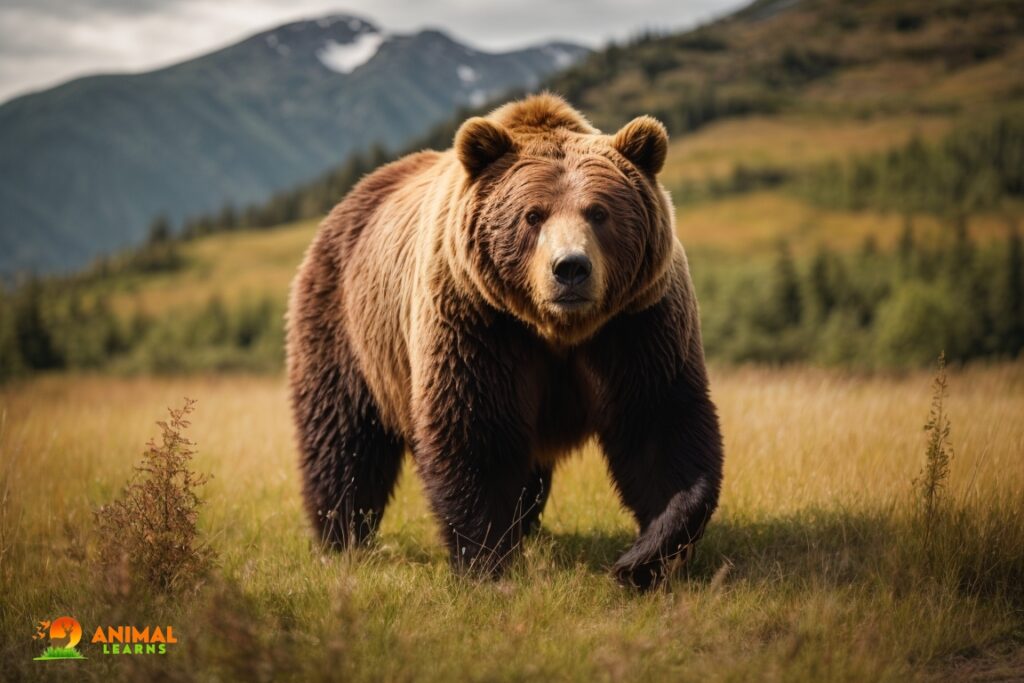
- Kodiak bears are a subspecies of the American black bear found in the Kodiak Archipelago in Alaska.
- They are among the largest bears in the world, with some individuals exceeding 1,500 pounds.
- Kodiak bears often have a dark brown coloration, and they have adapted to a diet rich in salmon during the spawning season.
Grizzly Bear (Ursus arctos horribilis):

- Grizzly bears, also known as North American brown bears, are closely related to black bears but are a distinct subspecies.
- They are typically larger than most American black bears and are known for their distinctive shoulder hump.
- Grizzly bears have a more varied diet, including plant matter, berries, fish, and small mammals.
Florida Black Bear (Ursus americanus floridanus):

- The Florida black bear is a subspecies of the American black bear found in Florida.
- They are smaller and darker in color compared to many other American black bear types.
- Florida black bears primarily inhabit forested and swampy areas and may venture into urban areas in search of food.
California Black Bear (Ursus americanus californiensis):
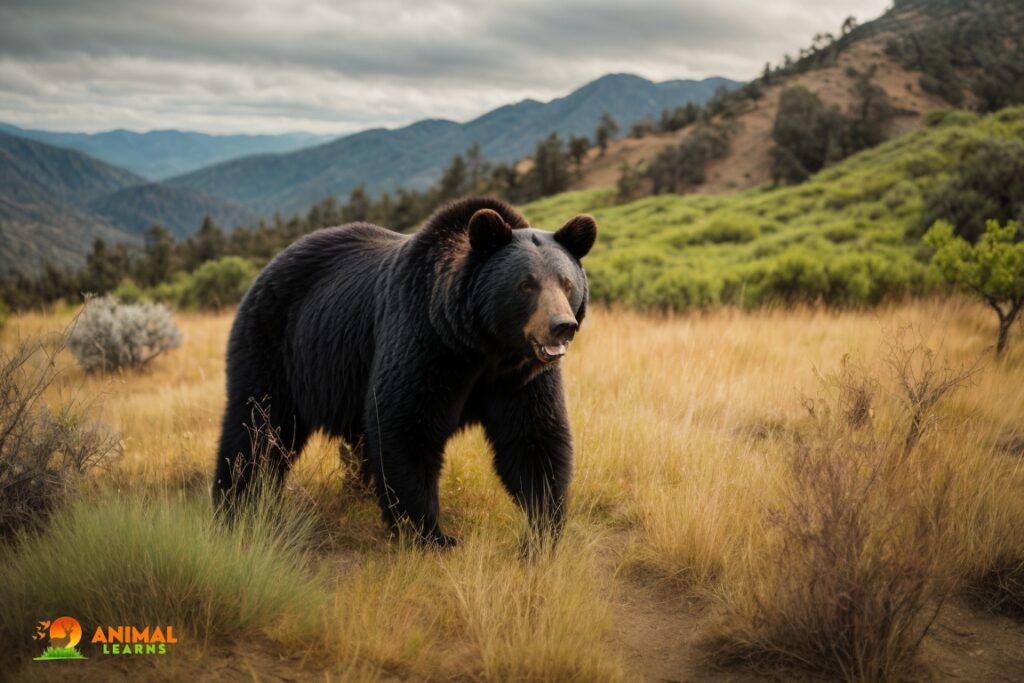
- California black bears are a subspecies of the American black bear found in California.
- They exhibit a range of coat colors, including brown, cinnamon, and black.
- Their diet varies depending on the region and may include vegetation, fruits, and occasional animal prey.
Nutrition and Diet Fact of Black Bears
Understanding black bears facts, nutrition facts and dietary preferences are crucial when delving into the fascinating world of these animals.
Basic black bear facts reveal that they are omnivorous consumers, feeding on a wide variety of foods, including plants, berries, insects, and occasionally, small mammals.
What’s even more astonishing are the amazing black bear facts related to their consumption habits, including their ability to adapt to different food sources based on the season.
In regions like California, where different types of black bears reside, their diet may vary depending on their specific habitat and the availability of resources.
So, when exploring facts about black bears, their diverse diet and range of black bear types add to their unique ecological significance.
FAQs
What are the different types of black bears?
There is one main species of black bear, Ursus americanus, but within this species, there are several subspecies, such as the Eastern Black Bear, Western Black Bear, and Florida Black Bear.
Are all black bears actually black in color?
Despite the name, black bears can come in a range of colors, including black, brown, cinnamon, and even white. The majority are black, but color variations exist.
What is the typical behavior of black bears?
Black bears are generally solitary animals, though they can occasionally be social. They are omnivores, with diets that include plants, fruits, insects, and occasionally small mammals. They are excellent climbers and swimmers, and they hibernate during the winter.
How can you differentiate between black bears and grizzly bears?
Size, behavior, and physical characteristics can help distinguish between black and grizzly bears. Black bears are usually smaller, have a straighter face profile, and lack the hump on their shoulders that grizzlies have.
Are black bears dangerous to humans?
Black bears are typically shy and avoid humans. However, they can be unpredictable, and encounters can turn dangerous if they feel threatened or if food is involved. It’s essential to follow bear safety guidelines when in a bear country to minimize potential risks.





